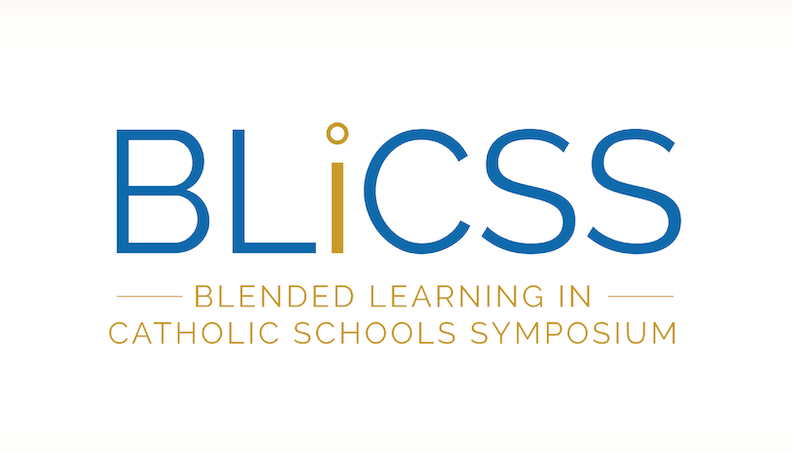April 5, 2023
What are the most innovative ideas among thought leaders in blended learning in Catholic schools? Get excited because we're about to share some insider knowledge from the sixth annual Blended Learning in Catholic School Symposium (BLiCSS)! The University of Notre Dame's Higher-Powered Learning program brought together educators from all over the nation to share their successes and chart courses forward. The conference was a massive success, with attendees sharing their experiences and ideas on making blended learning more effective. If you missed out on the conference, don't worry; in this blog post, we've compiled six takeaways from the conference. So, grab a cup of coffee and read on to discover the latest insights on blended learning in Catholic schools!
1. Start with the "Why"
What's the secret to effectively motivating an organization to adapt? Rodney Pierre-Antoine, our keynote speaker for this year's conference, delivered a powerful presentation on navigating change and inspiring principals and teachers to embrace innovation in their schools. Using Simon Sinek's Golden Circle as a guide, Rodney shared how he went from representing unwanted change within the newly-formed Lumen Christi Academies to being an effective leader who led his organization to implement blended-learning practices.
Takeaway: Starting with why is the key to motivating organizations to transform.
2. "Blended Learning is Catholic"
"Why do we do this?" posed Alan Barnicle, director of innovation and instructional improvement for the Diocese of Bridgeport. "We have, for too long, relied on force and even violence to obtain obedience. It is time to move towards an instructional model of respect and dignity. We are called to love our children, to treat them with dignity and respect, and to serve those who need it the most." A personalized approach to learning is deeply rooted in the Catholic ethos. Alan reminded us of this and shared tools educators of the Diocese of Bridgeport use to make their students feel known.
Takeaway: There is a deep connection between personalized learning and Catholic education.
3. Try a new model
Do you have an innovative solution aimed at meeting the needs of your students but not ready to launch it across the entire school? Consider starting a micro school as a pilot! Megan Cerbins, principal of Blessed Sacrament in Milwaukee and HPL team member, shared how she created differentiated grouping across grades 3-5 to personalize learning for students. Her core idea: granted you can ensure that students will learn on-grade level (typically through small group instruction), instead of cohorting students by grade level, create differentiated groups based on student need.
We left this presentation thinking "Dream big, start small."
4. Integrate specialized curriculum into your blended classroom
How can a Science of Reading curriculum exist alongside a blended learning approach? Some educators can be too hesitant to incorporate other learning frameworks into their blended classroom out of fear it will "remove the blended-learning magic." Scarlett Wand, kindergarten teacher at St. John Paul II in Minneapolis, teamed up with Lindsey McDermott and Katharine Campbell from Groves Learning Organization to share how blended learning and the Groves literacy curriculum could work hand-in-hand to support students.
The takeaway from this presentation: Educators can incorporate a wide variety of instructional approaches into their classroom while still incorporating blended learning best practices.
5. Connect, Experience, and Reflect
Blended learning implementation might seem like a simple point A to point B progression, but in reality, there are so many pieces to the puzzle. Shannon Tabaldo and Meaghan Crowley-Sullivan from the iDEAL Institute at Loyola Marymount University shared their secrets for how they help principals and teachers put together this puzzle for their students. Their special strategy? A spirit of interconnectivity. They provide the space during professional development to connect with other blended-learning practitioners, experience best pedagogical practices, and reflect to build foundations of understanding.
Our takeaway: Embrace the complexity of change and create thoughtfully-developed, holistic learning experiences for educators.
6. Be on the lookout for the HPL Network!
"I'm already looking forward to BLiCSS 7.0, but what can I do in the meantime?" Glad you asked! Higher-Powered Learning will be launching its newest initiative, the HPL Network, over the summer. The HPL Network is a partnership of Catholic school teachers and leaders whose goal is to provide a trusted exchange of connection and education for blended learning practitioners and innovators. This professional network will connect blended-learning practitioners, provide curated resources on blended and personalized learning, and maintain a library of software reviews. Make sure that you are registered for our mailing list here to get the latest information about the HPL Network!
A huge THANK YOU to our major funder, the GHR Foundations, our BLiCSS meal sponsor, Anthony Cook, and our friends at Curriculum Associates, creators of i-Ready, ad Our Lady of Grace Catholic Church for generously allowing us to use their meeting space.
If you attended BLiCSS 6.0, what were your takeaways?
Who would you like to hear from at BLiCSS 7.0 in 2024?
Connect with the HPL Team at hpl@nd.edu.
 Alliance for Catholic Education
Alliance for Catholic Education
